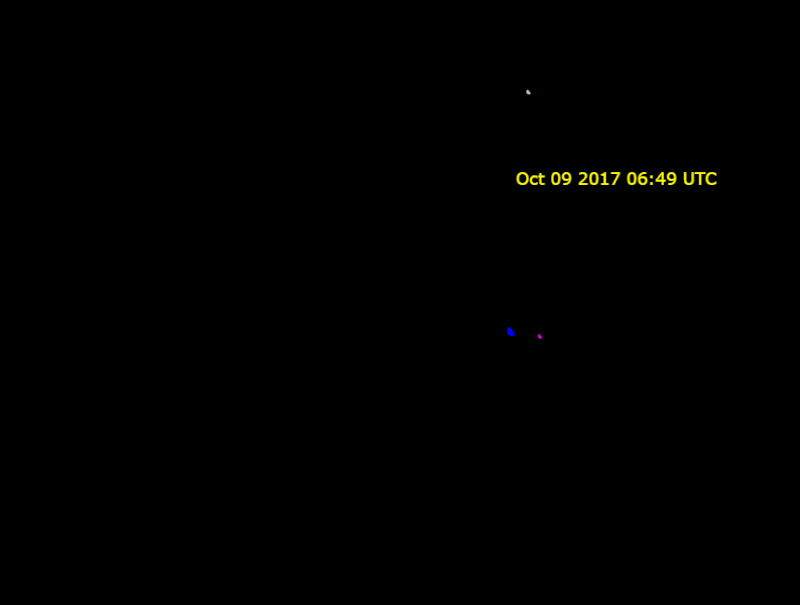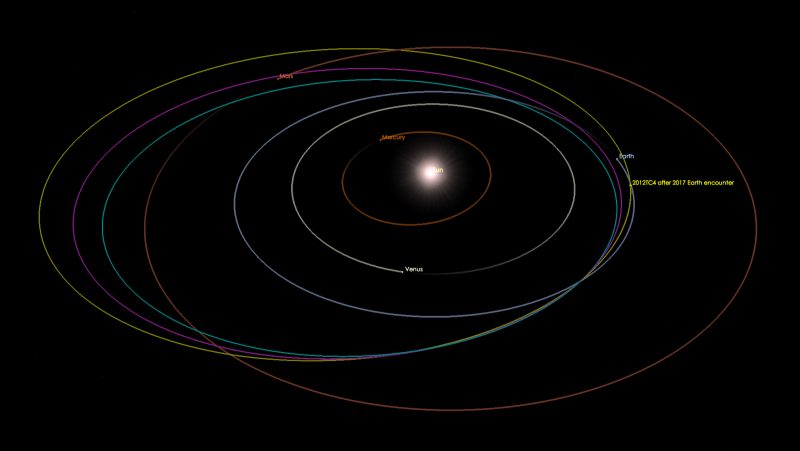
Throughout human history, we earthlings have been, for the most part, cheerfully unaware of the potential threat posed by Near-Earth Asteroids (NEOs). It’s only been in recent decades that improved tracking mechanisms, and more astronomers looking, have increased both public and scientific awareness of this issue. Now we know there are, potentially, millions of chunks of flying debris in space, and that space boulders sweep past Earth continually. Astronomers also know that no large, continent-destroying asteroid is on a collision course with Earth, for the foreseeable future. But city-shattering asteroids – like the one whose shock wave broke windows in the Russian city of Chelyabinsk in February 2013, injuring 1,500 people and damaging over 7,000 buildings – are smaller and hence harder to track. Plus, what would we do if we saw one coming our way? A first step would be to get the information: to find out if, indeed, the asteroid were truly on a collision course with Earth and to find out whatever else we could about it. Now an international team of astronomers led by NASA scientists has practiced this first step by successfully completing the first global asteroid tracking exercise, using a real asteroid.
They used the asteroid designated 2012 TC4, which passed safely close to Earth – within the moon’s orbit – on October 11-12, 2017. Prior to this year, this object was observed for just one week in the year 2012. Astronomers tracked its orbit well enough to know it would return and come close to Earth – but pose no danger to us – although they didn’t have its orbit pinned down precisely. That’s when the idea for the TC4 Observation Campaign was born.
NASA’s Planetary Defense Coordination Office launched the campaign this past April. NASA said:
The exercise commenced in earnest in late July, when the European Southern Observatory’s Very Large Telescope recovered the asteroid. The finale was a close approach to Earth in mid-October. The goal: to recover, track and characterize a real asteroid as a potential impactor — and to test the International Asteroid Warning Network for hazardous asteroid observations, modeling, prediction and communication.
The target of the exercise was asteroid 2012 TC4 — a small asteroid originally estimated to be between 30 and 100 feet (10 and 30 meters) in size, which was known to be on a very close approach to Earth. On October 12, TC4 safely passed Earth at a distance of only about 27,200 miles (43,780 km) above Earth’s surface. In the months leading up to the flyby, astronomers from the U.S., Canada, Colombia, Germany, Israel, Italy, Japan, the Netherlands, Russia and South Africa all tracked TC4 from ground- and space-based telescopes to study its orbit, shape, rotation and composition.
Detlef Koschny, co-manager of the near-Earth object (NEO) segment in the European Space Agency (ESA)’s Space Situational Awareness program, said:
This campaign was an excellent test of a real threat case. I learned that in many cases we are already well-prepared; communication and the openness of the community was fantastic.
Using the observations collected during the campaign, scientists at NASA’s Center for Near-Earth Object Studies (CNEOS) at the Jet Propulsion Laboratory in Pasadena, California were able to precisely calculate TC4’s orbit, predict its flyby distance on Oct. 12, and look for any possibility of a future impact. Davide Farnocchia from CNEOS, who led the orbit determination effort, said:
The high-quality observations from optical and radar telescopes have enabled us to rule out any future impacts between the Earth and 2012 TC4. These observations also help us understand subtle effects such as solar radiation pressure that can gently nudge the orbit of small asteroids.

In addition to the observation campaign, NASA used this exercise to test communications between the many observers and also to test internal U.S. government messaging and communications up through the executive branch and across government agencies, as it would during an actual predicted impact emergency. Vishnu Reddy of the University of Arizona’s Lunar and Planetary Laboratory in Tucson, who led the observation campaign, said:
We demonstrated that we could organize a large, worldwide observing campaign on a short timeline, and communicate results efficiently,
Michael Kelley, TC4 exercise lead at NASA Headquarters in Washington added:
We are much better prepared today to deal with the threat of a potentially hazardous asteroid than we were before the TC4 campaign.
NASA’s Planetary Defense Coordination Office administers the Near-Earth Object Observations Program and is responsible for finding, tracking and characterizing potentially hazardous asteroids and comets coming near Earth, issuing warnings about possible impacts, and assisting coordination of U.S. government response planning, should there be an actual impact threat.

Bottom line: This is only a test. Astronomers report on the TC4 Observation Campaign, which, in October, used a real Near-Earth Asteroid to practice our global response to a potential asteroid threat.











